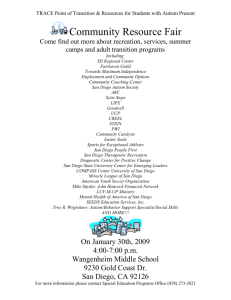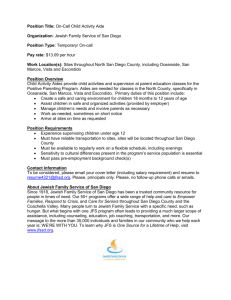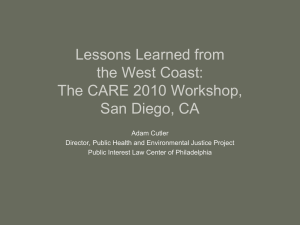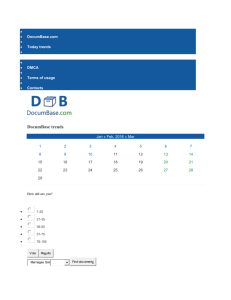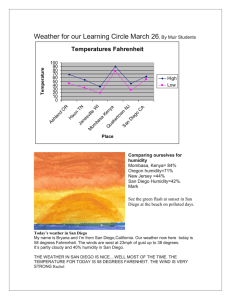Earth Science Group Presentations
advertisement
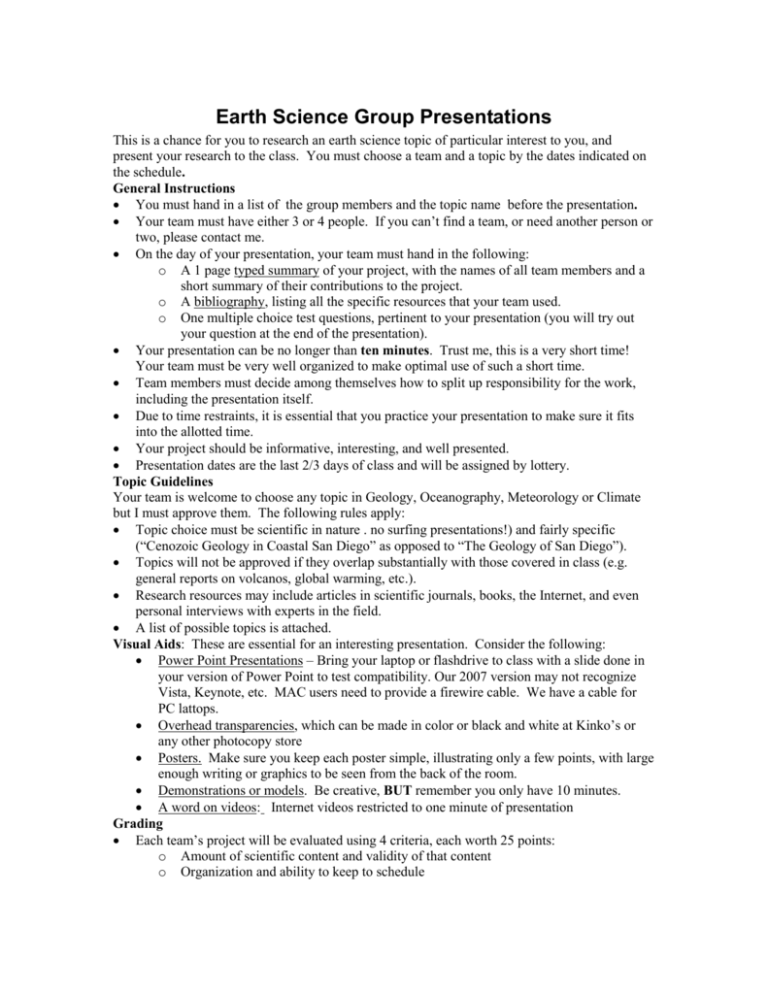
Earth Science Group Presentations This is a chance for you to research an earth science topic of particular interest to you, and present your research to the class. You must choose a team and a topic by the dates indicated on the schedule. General Instructions You must hand in a list of the group members and the topic name before the presentation. Your team must have either 3 or 4 people. If you can’t find a team, or need another person or two, please contact me. On the day of your presentation, your team must hand in the following: o A 1 page typed summary of your project, with the names of all team members and a short summary of their contributions to the project. o A bibliography, listing all the specific resources that your team used. o One multiple choice test questions, pertinent to your presentation (you will try out your question at the end of the presentation). Your presentation can be no longer than ten minutes. Trust me, this is a very short time! Your team must be very well organized to make optimal use of such a short time. Team members must decide among themselves how to split up responsibility for the work, including the presentation itself. Due to time restraints, it is essential that you practice your presentation to make sure it fits into the allotted time. Your project should be informative, interesting, and well presented. Presentation dates are the last 2/3 days of class and will be assigned by lottery. Topic Guidelines Your team is welcome to choose any topic in Geology, Oceanography, Meteorology or Climate but I must approve them. The following rules apply: Topic choice must be scientific in nature . no surfing presentations!) and fairly specific (“Cenozoic Geology in Coastal San Diego” as opposed to “The Geology of San Diego”). Topics will not be approved if they overlap substantially with those covered in class (e.g. general reports on volcanos, global warming, etc.). Research resources may include articles in scientific journals, books, the Internet, and even personal interviews with experts in the field. A list of possible topics is attached. Visual Aids: These are essential for an interesting presentation. Consider the following: Power Point Presentations – Bring your laptop or flashdrive to class with a slide done in your version of Power Point to test compatibility. Our 2007 version may not recognize Vista, Keynote, etc. MAC users need to provide a firewire cable. We have a cable for PC lattops. Overhead transparencies, which can be made in color or black and white at Kinko’s or any other photocopy store Posters. Make sure you keep each poster simple, illustrating only a few points, with large enough writing or graphics to be seen from the back of the room. Demonstrations or models. Be creative, BUT remember you only have 10 minutes. A word on videos: Internet videos restricted to one minute of presentation Grading Each team’s project will be evaluated using 4 criteria, each worth 25 points: o Amount of scientific content and validity of that content o Organization and ability to keep to schedule o o Oral Presentation, including familiarity with material, ability to pronounce scientific terms Visual Presentation (big enough for people in the back to see, correct grammar and spelling Possible Topics (the more specific, the better) Hydrothermal Vents Offshore Drilling for Petroleum and Natural Gas The formation of petroleum The formation of Coal Coastal Erosion in San Diego/California Some specific aspect of Geology in San Diego Rising sea levels: a real threat for the future? Faults in San Diego The possibility of new earthquake/volcanic activity at Mammoth Mountain Using sea-floor sediments to study climate change Using glacier ice cores to study climate change How the earth’s mantle moves the lithospheric plate Polarity Reversals of the Earth’s Magnetic Field The possibility of water on another planet/moon in our solar system Superplume Episodes in the Earth’s Geologic History The Cretaceous-Tertiary Extinction The Permian-Triassic Extinction The Origins of Water on Earth Volcanic activity in and around Iceland Recent “hot-spot” activity in and around Hawaii Formation of diamonds Ground-water contamination Loss of ground-water resources The loss of Colorado River water for San DiegoCounty and its negotiations with Imperial County The geology of a specific national/state park (good examples include Yosemite, the Grand Tetons, Joshua Tree, Devil’s Tower, Devil’s Postpile, Death Valley, etc.) Evolution vs. “intelligent design” Climate and thermohaline (deep water) currents Tides Using oxygen isotope analysis to determine currents Implications of Global warming for California’s water supply





